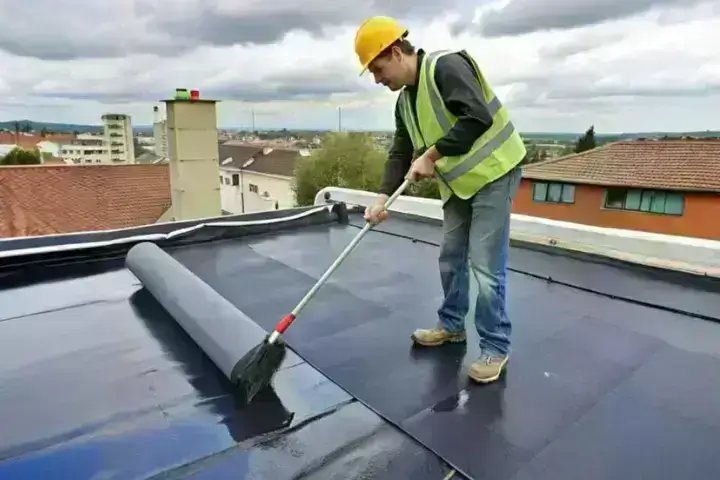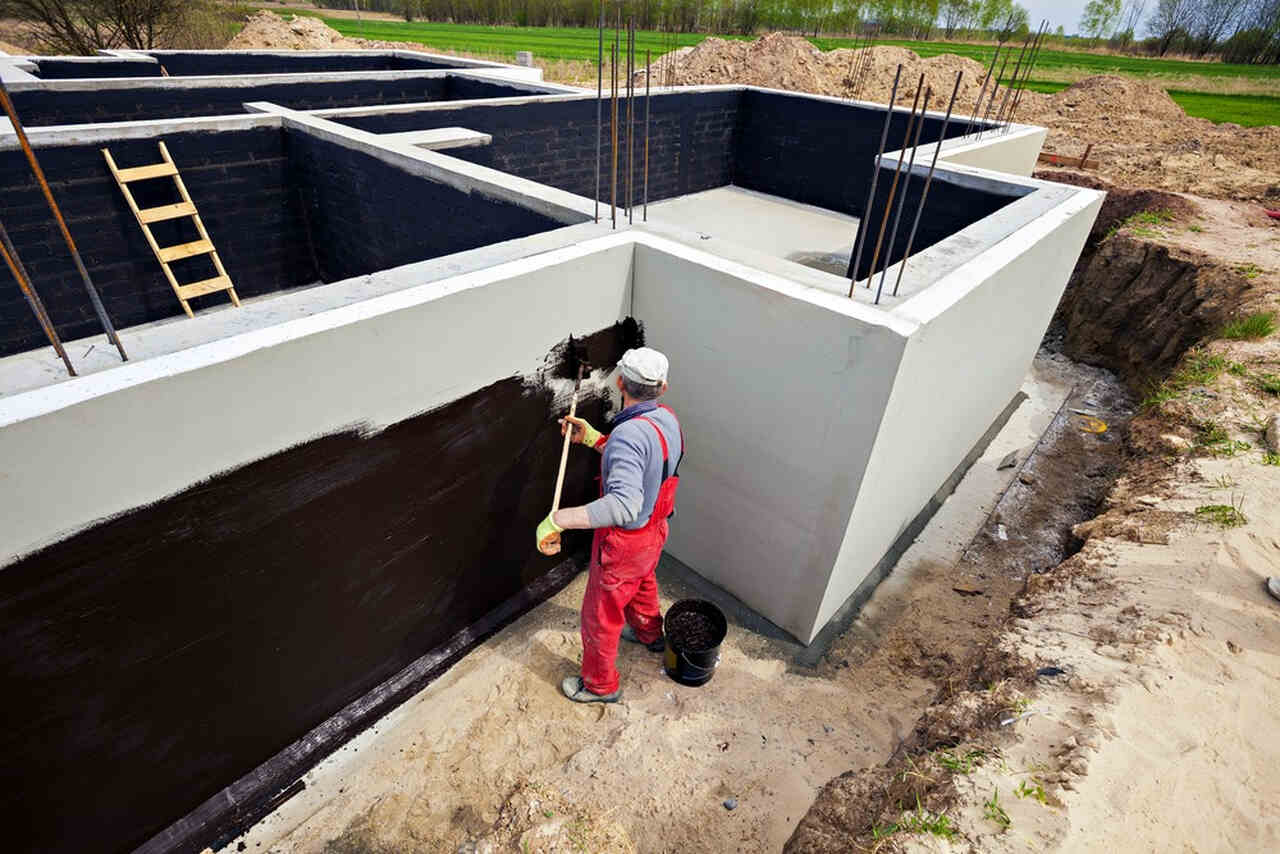How Landscape drainage Omaha Protects Your Foundation from Seasonal Flooding
How Landscape drainage Omaha Protects Your Foundation from Seasonal Flooding
Blog Article
Exactly How Waterproofing Functions: A Comprehensive Appearance at Strategies and Technologies
Waterproofing is essential for protecting frameworks from moisture-related damage. It involves various methods and technologies that produce barriers versus water breach. Standard methods, such as compressed clay, exist side-by-side with modern advancements like liquid-applied membrane layers. Comprehending the nuances of these approaches is vital for reliable application. The efficiency of any kind of waterproofing option pivots not only on the techniques utilized but likewise on ongoing upkeep and assessment. What are the essential variables that affect long-term efficiency?
Comprehending the Basics of Waterproofing
Waterproofing is a vital process that safeguards structures from water breach, which can cause substantial damage over time. This technique entails the application of numerous products and techniques made to produce an obstacle versus moisture. The key objective is to avoid water from penetrating surface areas, which can create wear and tear, mold development, and architectural instability.Various factors influence the selection of waterproofing approach, including the sort of structure, its area, and environmental conditions. Understanding the physics of water motion and the residential or commercial properties of various products is critical in choosing a reliable waterproofing solution.Effective waterproofing not only safeguards buildings but likewise enhances their durability and integrity. Generally, it is integrated right into the style stage of building and construction to ensure extensive defense. As recognition of water-related problems grows, the value of recognizing waterproofing fundamentals becomes increasingly clear to designers, contractors, and homeowner alike.
Traditional Waterproofing Approaches
Traditional waterproofing techniques have been used for centuries, relying upon time-tested techniques and materials to protect structures from water damages. One of the earliest approaches entails the use of clay, which, when compacted, produces a natural barrier against wetness. Additionally, asphalt, a sticky, black product originated from oil, has been employed for its water-resistant residential or commercial properties, frequently applied to roof coverings and foundations.Another method involves the application of lime-based plasters, which supply a breathable layer that enables wetness to escape while avoiding water ingress. Thatch roof covering, a conventional approach still seen in some societies, provides exceptional waterproofing as a result of its firmly packed straw layers.Moreover, making use of stone and block has been prominent, as these products are inherently resistant to water when correctly installed. Generally, standard waterproofing techniques emphasize the value of picking suitable products and construction techniques to boost durability versus water breach.
Modern Waterproofing Technologies
Improvements in modern waterproofing technologies have actually reinvented the means structures are protected from water damages. Ingenious techniques such as liquid-applied membrane layers and sophisticated sealants have actually boosted the performance and convenience of waterproofing services. These innovations permit seamless application, minimizing the risk of leakages and making sure extensive protection over complicated surfaces.Moreover, the combination of clever innovations, such as dampness sensing units and automated monitoring systems, makes it possible for real-time analysis of waterproofing efficiency. This positive strategy facilitates timely upkeep and minimizes long-term repair service costs.Additionally, improvements in spray-applied coatings provide quick application and excellent adhesion, adapting to different substratums while offering durable defense. Strategies like polymer-modified systems even more enhance versatility and longevity, making them appropriate for diverse environments. On the whole, contemporary waterproofing technologies not just minimize water breach but additionally contribute to the longevity and sustainability of structures, marking a significant shift in the industry.
Products Used in Waterproofing
The effectiveness of waterproofing services heavily counts on the products utilized in their application. Numerous materials are used to produce barriers versus water access, each with special properties fit for different environments. Generally utilized products consist of membranes, finishings, and sealants.Liquid-applied membrane layers, typically made from polyurethane or acrylic, form a smooth obstacle that adapts to complicated surface areas. Sheet membrane layers, commonly built from rubber or polycarbonate, offer durability and are perfect for bigger locations. Additionally, cementitious waterproofing products, made up of cementitious compounds, give superb bond and flexibility.Sealants made from silicone or polyurethane are essential for joints and seams, guaranteeing comprehensive protection. Furthermore, advanced products, such as geo-composite membrane layers, combine numerous features, boosting performance. Generally, the selection of waterproofing products is crucial in attaining resilient and reliable water resistance, customized to details project demands and ecological conditions.
Usual Applications of Waterproofing
Waterproofing plays an important duty in different industries, making certain the longevity and integrity of frameworks. Usual applications consist of residential solutions that safeguard homes, business framework that safeguards services, and commercial setups that call for durable security against dampness. Understanding these applications highlights the importance of waterproofing in maintaining both security and capability across different atmospheres.
Residential Waterproofing Solutions
Many homeowners encounter difficulties with moisture intrusion, making effective residential waterproofing remedies important. Numerous techniques exist to resolve this issue, including inside and exterior waterproofing systems. Interior remedies frequently entail the application of sealers and finishes to basement walls, which help avoid water infiltration. Exterior techniques generally include the installment of drainage systems and waterproof membranes that draw away water away from the foundation.Additionally, homeowners might consider sump pumps to remove water build-up and dehumidifiers to manage moisture degrees. Correct grading and using gutters additionally play a crucial duty in managing water circulation around the home. By implementing these strategies, homeowners can significantly reduce the threat of water damages and mold waterproofing existing retaining wall growth, guaranteeing a dry and secure living atmosphere.

Industrial Facilities Protection
Effective waterproofing options play a vital function in the protection of business framework. Foundation waterproofing Omaha. These techniques are essential for safeguarding buildings, vehicle parking frameworks, and bridges from water damages, which can endanger architectural stability and cause expensive repairs. Usual applications consist of the installment of membranes, coverings, and sealers that produce obstacles versus moisture infiltration. Areas such as basements, roof coverings, and outside wall surfaces are commonly focused on to guarantee durability and durability. In addition, waterproofing systems can enhance power efficiency by preventing water-related problems that may bring about mold growth and wear and tear. By implementing robust waterproofing actions, building proprietors can safeguard their investments and preserve functional effectiveness, eventually adding to the total sustainability of industrial facilities
Industrial Applications Review
While different sectors deal with special difficulties, the need for trusted waterproofing options continues to be a constant in industrial applications. Industries such as manufacturing, building, and power usually run into environments where moisture direct exposure can threaten architectural integrity and functional effectiveness. In producing facilities, waterproofing is crucial for shielding equipment and products from water damages. In building and construction, it safeguards foundations and cellars versus groundwater infiltration. The power market depends on waterproofing for the security of devices in hydroelectric plants and overseas frameworks. Furthermore, food handling industries use waterproofing to ensure hygiene and compliance with security requirements. On the whole, effective waterproofing services are vital for enhancing resilience, safety and security, and efficiency across numerous commercial settings.
Upkeep and Long Life of Waterproofing Solutions
Although waterproofing options are developed to provide long-term protection against dampness invasion, regular upkeep is vital to ensure their performance and durability - Water Solutions. Routine evaluations play a significant role in recognizing prospective problems such as splits, peeling off, or signs of water damages. Resolving these problems promptly can stop more deterioration and costly repairs.Additionally, cleansing the surface of waterproofed locations assists remove dust and particles that could jeopardize the integrity of the waterproofing barrier. It's likewise suggested to reapply safety coatings or sealants as suggested by makers to keep optimal performance. Environmental aspects, such as UV exposure and severe climate condition, can affect the lifespan of waterproofing products, making routine evaluation important
Often Asked Questions
Can Waterproofing Be Applied in Winter?
The question of using waterproofing in winter elevates worries concerning adhesion and treating. Several items might not execute at their ideal in reduced temperatures, requiring cautious option and consideration of certain guidelines for effective application.
Exactly How Long Does Waterproofing Usually Last?
The period of waterproofing performance varies based upon materials and ecological elements. Typically, it can last from five to ten years, but regular maintenance and assessments are vital to guarantee peak efficiency and long life.
Is Do It Yourself Waterproofing Effective and Safe?
The performance and safety and security of DIY waterproofing rely on various variables, consisting of material top quality and application technique. While some individuals accomplish sufficient results, others may experience concerns that endanger lasting protection and structural honesty.
What Are the Indications of Failing Waterproofing?
Indicators of stopping working waterproofing include noticeable water stains, peeling paint, mold development, mildewy odors, and wetness in wall you could check here surfaces or ceilings - Sump pump installation & replacement Omaha. These signs suggest jeopardized barriers, necessitating punctual evaluation and possible removal to stop further damage
Just how Do I Pick the Right Waterproofing Professional?

Report this page